Vol. 5 : 梅干し作り
ST編集部のカナダ人スタッフ、ジャッキーが日本のモノづくりの現場を見学し、レポートするコラムの最終回は梅干し作りです。今回ジャッキーは、神奈川県小田原市の農家で梅干を作っている昇珠園の穂坂ご夫妻を訪ね、作業を拝見しました。(今回は動画はありません。)

Unfortunately, it was raining when Jackie visited Shojuen in Odawara, Kanagawa Prefecture. The ume were covered with plastic sheets.
残念ながら神奈川県小田原市にある昇珠園を訪れた日は雨。梅干しはビニールシートで覆われていました。
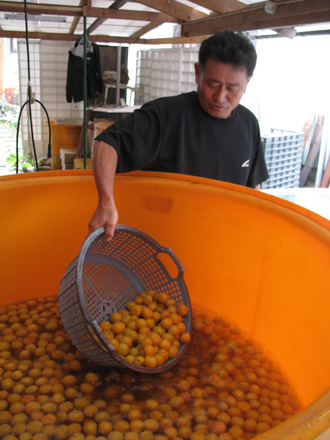
樽に入った塩漬けの梅を取り出す穂坂昇さん。樽の中の液体はすべて梅酢。
Noboru Hosaka takes out the salted ume from the barrel. The liquid in the barrel is umezu (juice from the ume).
|
○ ○ ○ ○ ○ ○ ○ ○ ○ ○ ○ ○ ○ ○ ○ ○ ○ ○ ○ ○ ○ ○ ○ ○ ○ ○ ○ ○ ○ ○ ○ ○ ○ ○ ○ ○
○ ○ ○ ○ ○ ○ ○ ○ ○ ○ ○ ○ ○ ○
|
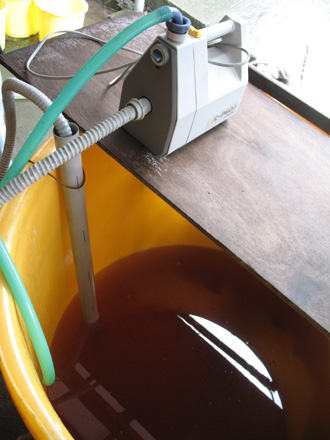
梅の味が均一になるように、梅酢はこのようなポンプを使って樽の中で循環させます。
The umezu is mixed using a pump so that the salt is equally distributed
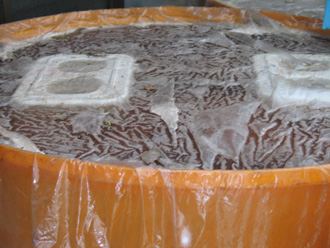
上に乗っかっている白い四角いものは梅干しに乗せた重し。500kg の樽には15キロの重しを乗せます。
The white squares floating in the barrels are weights. For a 500 kg barrel, 15 kg weights are used.
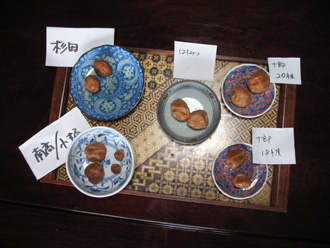
ジャッキーが味見させてもらった6種類の昇珠園の梅干し。はちみつ梅干しは珠美夫人のオリジナルレシピ。
These are the six different umeboshi Jackie tasted. The honey umeboshi is Mrs. Hosaka’s original recipe.
|
Vol. 4 : 食品サンプル
ST編集部のカナダ人スタッフ、ジャッキーが日本のモノづくりの現場を見学し、レポートするコラムの4回目は外国人観光客の目を引き、お土産としても人気の高い食品サンプルがテーマです。岐阜の食品サンプル職人、国田忠男さんの作品の数々を拝見しました。その詳しい内容は週刊ST7月31日号紙面に掲載されています。サンプル職人たちの技を動画でご覧ください。
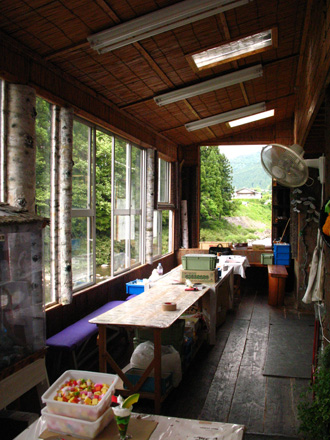
Asahi Sample Kobo in Gujohachiman, Gifu Prefecture, is a charming workshop-style fake plastic food factory. It sits right on the river and is surrounded by nature. 群馬県郡上市八幡にある旭サンプル工房は食品サンプル作りを体験できる場所です。横では川が流れていて、自然に囲まれた気持ちのよい場所でした。
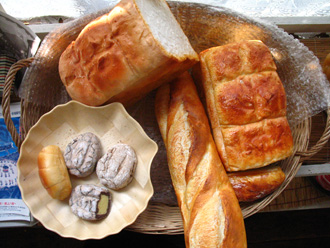
Bread samples, like most samples, are made by casting a mold from an actual piece of bread, and then creating the plastic sample from the mold. パンの食品サンプルを作る場合、実際ので方を取って、それをもとにプラスチックのサンプルを作ります。
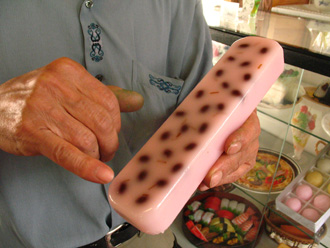
Kunida-san explains that floating azuki beans are difficult to create in Japanese sweets. この和菓子で、小豆の浮き具合をリアルに見せるのは難しかった、と国田さん。
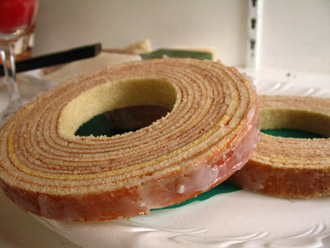
Rollcakes from Asahi Sample Kobo are very realistic! 旭サンプル工房のロールケーキは本物そっくり!
|
○ ○ ○ ○ ○ ○ ○ ○ ○ ○ ○ ○ ○ ○ ○ ○ ○ ○ ○ ○ ○ ○ ○ ○ ○ ○ ○ ○ ○ ○ ○ ○ ○ ○ ○ ○
○ ○ ○ ○ ○ ○ ○ ○ ○ ○ ○ ○ ○ ○ ○ ○ ○ ○ ○ ○ ○ ○ ○ ○ ○ ○ ○ ○ ○ ○
|
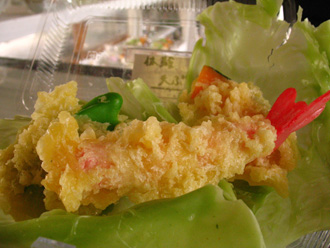
When people visit Asahi Sample Kobo, they can make their own ebi tempura, green pepper tempura and pumpkin tempura, among other things. 旭サンプル工房では、天ぷらなどを体験して作ることができます。

Tadao Kunida. The bark on the trees all around him is actually plastic. こちらが旭サンプルの国田忠男さん。周りの樹皮は実はすべてプラスチック製。
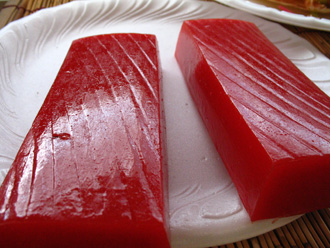
This is a fake plastic food version of tuna. Apparently, making samples of raw foods is the most challenging. プラスチック製のマグロのサンプル。生の食品のサンプルを作るのは特に難しいのだとか。
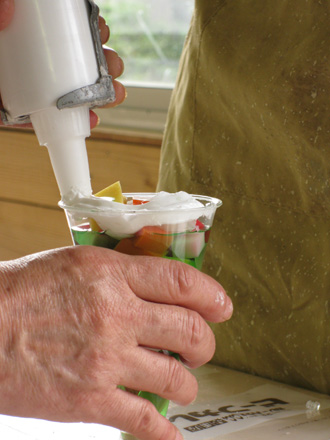
Jackie made a parfait at Asahi Sample Kobo. You put the ice cream layer in with a caulking gun. This was quite fun, but the shop assistant had to help a little. ジャッキーはパフェを作りました。コーキングガンでアイスクリームを乗せています。楽しかったけど、お店の人の助けなしでは難しかった。
|
Vol. 3 : 和傘
ST編集部のカナダ人スタッフ、ジャッキーが日本のモノづくりの現場を見学し、レポートするコラムの3回目は和傘がテーマです。数少ない和傘の産地として知られる岐阜県で和傘づくりの現場を取材しました。その詳しい内容は週刊ST6月26日号に掲載されています。和傘職人たちの技を動画でご覧ください。
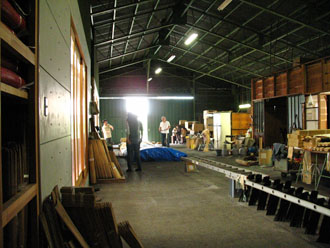
The workshop of Fujisawa Shoten Co. in Gifu City, Gifu Prefecture. There are separate rooms for different processes.
岐阜市にあるマルト藤沢商店の作業場。作業の内容ごとに部屋が分かれています。
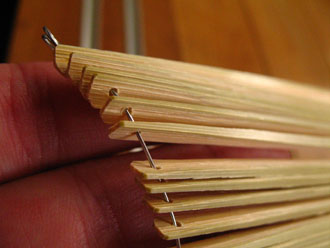
Fourty eight parent bones, which make up one wagasa, are pierced and put together with a wire. 1本の傘を作るために必要な親骨48本はこうして穴を開けて針金でまとめられます。
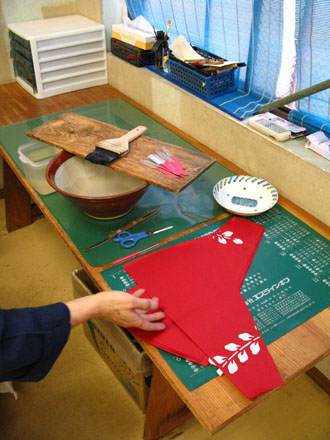
Sixteen pieces of fan-shaped washi (worth four parent bones) are applied using glue made of tapioca. 1枚が骨4本分に相当する扇型の和紙を16枚張っていきます。使用するのりはタピオカでできたものです。
|
○ ○ ○ ○ ○ ○ ○ ○ ○ ○ ○ ○ ○ ○ ○ ○ ○ ○ ○ ○ ○ ○ ○ ○ ○ ○ ○ ○ ○ ○ ○ ○ ○ ○ ○ ○
○ ○ ○ ○ ○ ○ ○ ○ ○ ○ ○ ○ ○ ○ ○ ○
|
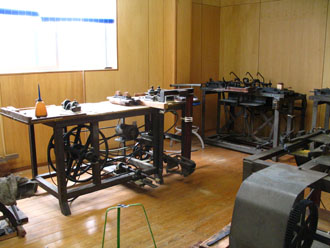
These are some of the machines used to carve the bones. Each bamboo stalk is slightly different from the next, so the machines have to be fine-tuned every time. これは傘骨を作るためのさまざまな機械。竹はそれぞれ違うので、その形に合わせて機械を調整します。
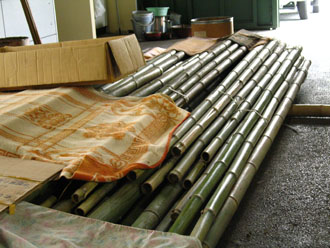
Madake bamboo is harvested around October or November each year, and stored at the workshop like this. The circumference of each stalk of bamboo is 27 cm. 作業場には10月から11月にかけて伐採された真竹がこうして置かれています。真竹は9寸(27センチ)のものを使用します。
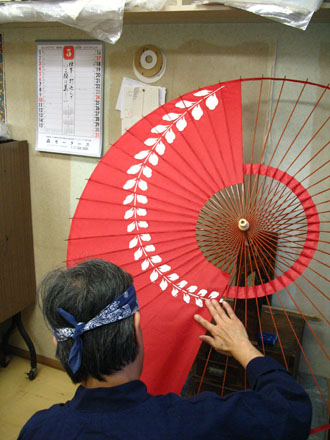
This is the washi application process. これは傘骨(親骨)に和紙を張る作業。
|
Vol. 2 : 耳かき
ST編集部のカナダ人スタッフ、ジャッキーが日本のモノづくりの現場を見学し、レポートするコラムの2回目は耳かきがテーマです。東京・巣鴨のとげぬき地蔵にいる職人さんに、自分の耳に合った竹の耳かきをその場で作ってもらい、耳かきを初体験しました。その詳しい内容は週刊ST5月29日号に掲載されています。耳かき職人の技を動画でご覧ください。
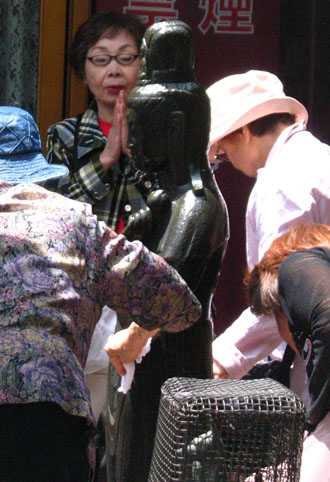
Koganji Temple is famous for its Togenuki Jizo statue. Many people, mostly seniors, line up to wash and clean the statue. とげぬき地蔵が有名な高岩寺。大勢の人(主に年長者)が、この菩薩像を洗いに訪れます。
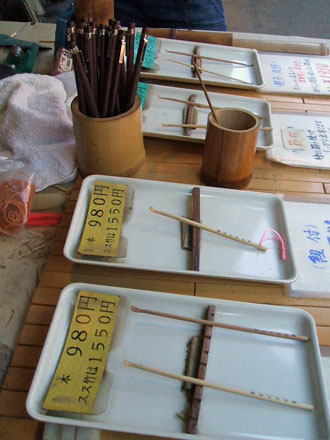
The different varieties of mimikaki are displayed at Harada's stall on the grounds of Koganji Temple, in Tokyo's Toshima Ward. 豊島区高岩寺境内にある「原田の耳かき」の露店に並ぶさまざまな種類の耳かき。
|
○ ○ ○ ○ ○ ○ ○ ○ ○ ○ ○ ○ ○ ○ ○ ○ ○ ○ ○ ○ ○ ○ ○ ○ ○ ○ ○ ○ ○ ○ ○ ○ ○ ○ ○ ○
○ ○ ○ ○ ○ ○ ○ ○ ○ ○
|
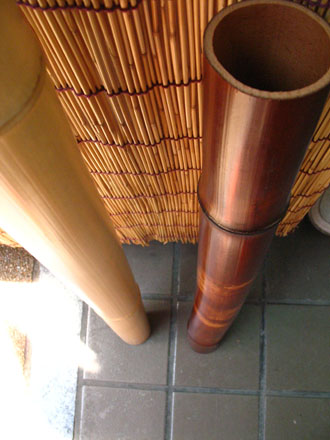
Here you can see the stalks of bamboo, sarashidake on the left and susudake on the right, which are used to make mimikaki. 耳かきの素材となる、左が晒竹(さらしだけ)で右が煤竹(ススダケ) です。
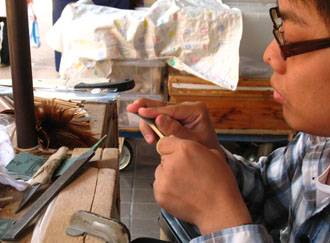
Akio Shirahama makes all of the mimikaki at the stall Harada-no- mimikaki by hand. Here, he is using sandpaper to make a mimikaki smooth. 原田の耳かきでは、すべての耳かきを職人の白浜彰朗さんが手作りしています。これは、紙やすりを使って耳かきの表面を磨いているところです。
|
Vol. 1 : たい焼き
ST編集部のカナダ人スタッフ、ジャッキーが日本のモノづくりの現場を見学し、レポートする新コラム。1回目は、昔から庶民のおやつとして親しまれているたい焼きです。50年以上の歴史を持つ東京下町のたい焼き屋さん「根津のたいやき」(文京区根津)を訪問し、あんこと皮の仕込みから見学しました。
その詳しい内容は週刊ST4月24日号に掲載されています。
たい焼き作りの職人技を動画でご覧ください。
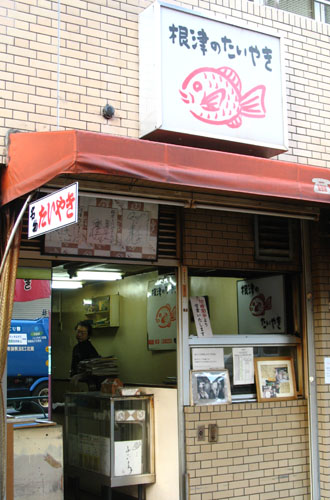
こちらが取材させていただいた「根津のたいやき」(東京都文京区根津1-23-9) Nezu-no-Taiyaki — This is the shop Jackie visited in Nezu, Bunkyo Ward,Tokyo.
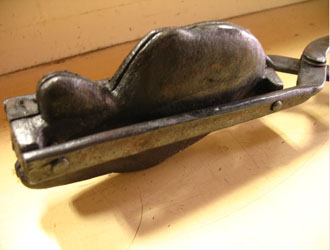
たいやきの型の先端部分。これに生地とあんこを入れて焼きます。 This is what the top part of the kata (taiyaki mold) looks like. It's the part that goes into the oven after the kiji (batter) and anko (red-bean paste) have been placed inside.
|
○ ○ ○ ○ ○ ○ ○ ○ ○ ○ ○ ○ ○ ○ ○ ○ ○ ○ ○ ○ ○ ○ ○ ○ ○ ○ ○ ○ ○ ○ ○ ○ ○ ○ ○ ○
○ ○ ○ ○ ○ ○
|
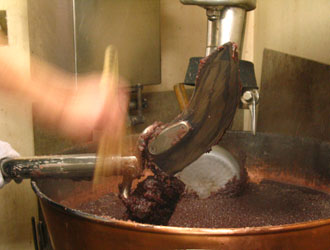
あんこはこの大きな鍋で作られます。ミキサーの先端は木製です。あんこが完成し、店主のお兄さんの史夫さんがミキサーを外してあんこを取っているところです。 Anko is made in this huge pan using a wooden mixer. This is Fumio Hayashi, shop owner Nobuo Hayashi's brother, cleaning the wooden anko mixer.
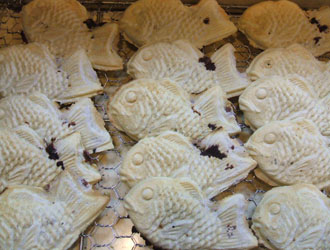
この日は150個の注文が入っていたので、お店の中は大忙し On the day of the visit, there was a special order for 150 taiyaki. You can imagine how busy the shop was.
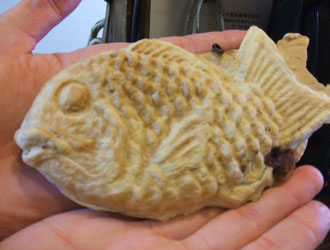
完成したほかほかのたいやき A freshly cooked Taiyaki
|
|






























